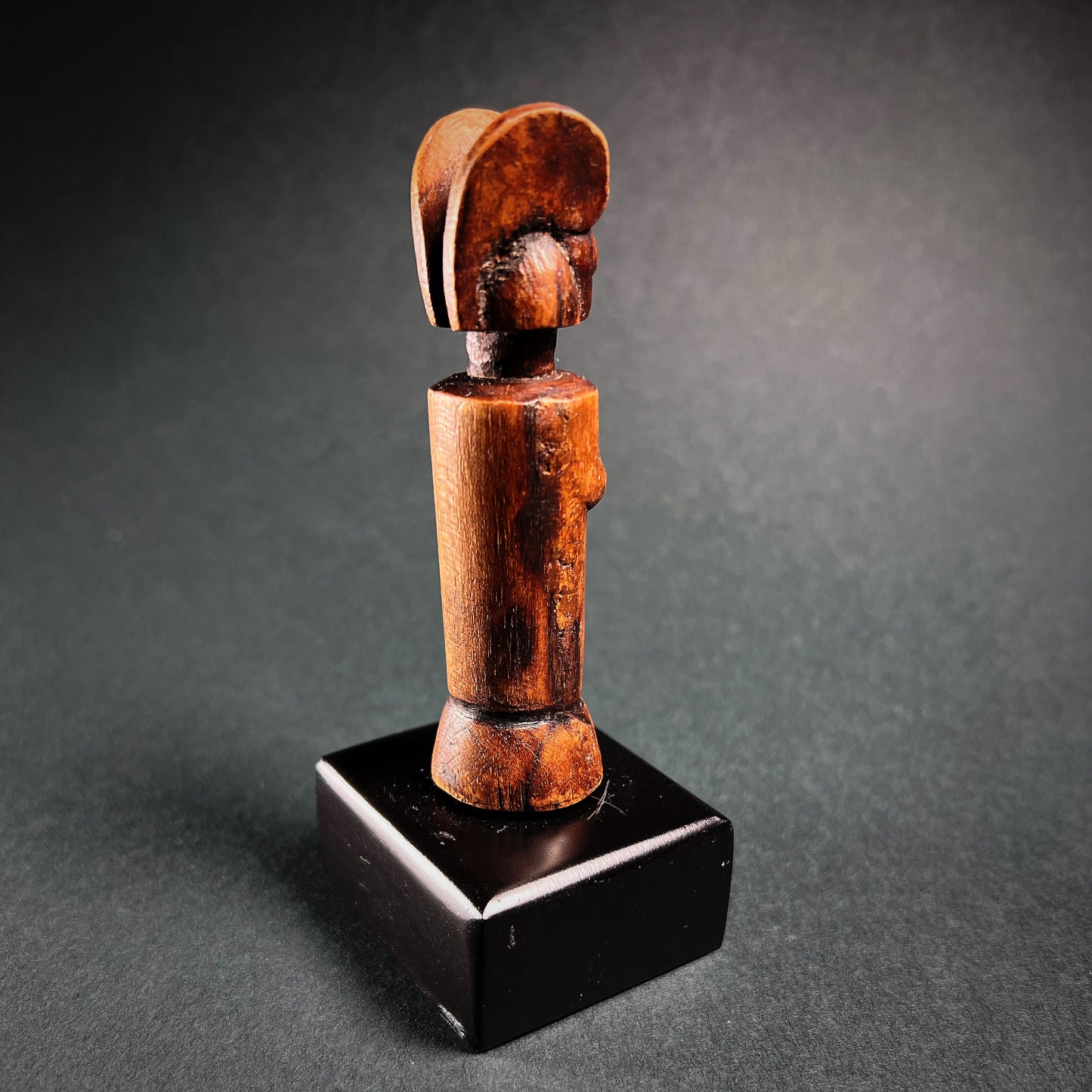Zaramo or Kwere Wooden Fertility Figure Mwana Hiti
Zaramo or Kwere Wooden Fertility Figure Mwana Hiti
Couldn't load pickup availability
Zaramo or Kwere peoples, late 20th century, Tanzania.
Excellent, miniature-sized wooden fertility figure, known as a mwana hiti, in the form of a highly abstract, cylindrical female body with a distinctive, elaborate double-crested coiffure, stylized bulging small breasts, and a navel - all characteristics linked to idealized womanhood and fertility.
These intriguing wooden figures are both charming works of art and important symbols of Zaramo and neighbouring peoples. The Kiswahili name for these figures, mwana hiti, translates as “child of wood” or “child of the chair” (Felix 1990, 83–84). Designed to portray children, the mwana hiti figures are associated with fertility, motherhood, and the protection of the family. They function primarily as ritual objects, carried sacred, status, magical, or religious properties and used in fertility rituals, birth ceremonies, and events related to the growth and well-being of children. Smaller ones also acting as a charm for future childbearing and healthy babies. These sculptural forms are understood to embody all “at once the vagina, the penis, a child, and the clan” (Swantz 1995, 39).
Excellent condition. Wear consistent with age and use. Minor abrasion. Smooth polished surface patina. Beautiful brown color with some dark encrustation. Size approx. 8,2cm x 2,0cm x 2,1cm (excluding modern base).
Provenance: Swedish private collection.
For a similar examples see:
Figure: Female (Mwana Hiti), The Metropolitan Museum of Art, Accession Number: 1993.381.3 (https://www.metmuseum.org/art/collection/search/316789)
Mwana Hiti, Ethnologisches Museum, Staatliche Museen zu Berlin/Ethnological Museum of Berlin, Accession Number: III E 3501 (https://smb.museum-digital.de/object/203446)
References and further reading:
Blood, Milk, and Death: Body Symbols and the Power of Regeneration among the Zaramo of Tanzania, Marja-Liisa Swantz, Praeger, 1995.
Mwana Hiti: Life and Art of the Matrilineal Bantu of Tanzania/ Leven und Kunst der Matrilinearen Bantu von Tansania, Published by Munich: Fred Jahn, 1990.



-
Shipping
The shipment will be prepared in the course of 3-5 days and dispatched via Posti Group Oyj or purchased item(s) can be picked up from our shop during the store's opening hours (Tarkk’ampujankatu 4, 00140, Helsinki, Finland). Within the Finland, all items are shipped via Posti Group Oyj unless otherwise requested. We pack the items carefully and mainly in recycled materials because we want to save nature. You will receive the tracking number for your items by e-mail.
-
Returns
Returns and exchange will be accepted within fourteen days (14) of receipt at the purchaser’s cost to include freight and packaging. Items must be returned in the same condition as when they were shipped, and will not be accepted if damaged or altered in any way. Please inform us via email (info@gotanmaailma.fi) or by calling +358408408352 before sending. We do not accept returns more than 14 days after delivery.



